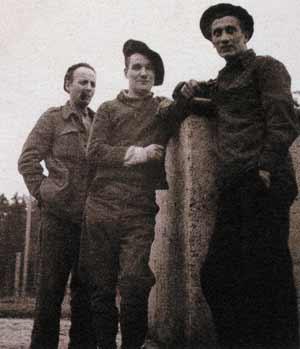Alfred Gaspart

Born in Argentina in 1900 to French parents, he moved to France following their accidental death. Already passionate about art and poetry, he went on to study at the Ecole Germain Pilon and later at the National School of Fine Arts in Paris, in the Atelier Cormon. In the 1930s he moved to the Montparnasse district in Paris where he formed friendships with artists and writers such as Pierre-Albert Birot, André Derain, Jean Follain, Marie Laurencin and André Salmon. A realist painter of the French school, he painted and photographed figures, landscapes and still lifes.
The artist was particularly prolific during his five years in captivity in Stalag VII A in Moosburg, Bavaria. Sick and suffering from severe depression, he met the young sculptor Volti who helped him survive. In 1943, Volti returned to France with some of Alfred Gaspart’s drawings. That same year, his studio was bombed, destroying most of his artwork, but Gaspart's was saved and served as a testament to the panful years endured in the camps. In October 1944, under the pseudonym Timour, Alfred Gaspart was awarded first prize at the Concours de la Captivité organised by the YMCA in Geneva. Liberated in 1945, he became a recluse and never showed his work in public again despite persistent pleas from his friends and family and France’s National Federation of Prisoners of War. He continued to work away from the public eye. He died alone in 1993. The work accomplished by the artist is composed of 1,840 pieces (all techniques and sizes combined). The artworks are accompanied by diary entries (293 double-sided pages) that are a glimpse into how Alfred Gaspart lived, thought and suffered during his years in captivity. Correspondence between him and his sister Paule, his muse and his confidant, also provide a window into his life.

